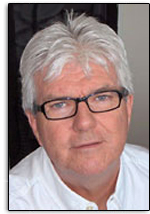Three great rivers flow through parallel canyons in the mountains of southwest China on their way to the coastal plains of Asia. At least ten dams have been built on two of them, the Mekong and the Yangtze.
The third remains wild: the remote, raging Nu, known as the Salween in Myanmar, where it empties into the Andaman Sea. It also serves Thailand. No dam stands in the path of its flowing blue waters. It is the last free-flowing river in China.
Environmentalists have waged a passionate defence of Nu for more than a decade, battling state hydropower companies determined to build several dams to harness the river. It is an epic struggle that has bounced from victory to defeat and back again and has recently taken on new significance: With global temperature rising, can China afford to protect its rivers and forgo an alternative to the coal-fired plants responsible for much of the world's greenhouse gas (GHG) emissions.
Green supporters across the country have argued that dams on the Nu would force the relocation of tens of thousands of people, destroy spawning grounds for fish, and threaten the livelihoods of farmers and fishermen downstream.
But China has promised to begin scaling back its use of coal even as its power needs continue to rise. The government pledged that one-fifth of the nation's energy use will come from non-fossil sources by 2030, and it intends to reach that in large part by building more dams. Provincial officials said in March that they would suspend constructions of small dams and instead establish a national park along the river. But environmentalists remain wary.
This valley in China's southwest Yunnan Province, is home to a kaleidoscope of ethnic and religious communities unparalleled in China. Farmers tend to fields along steep, terraced walls. Pastors hold services in churches overlooking the river while Tibetan lamas perform rituals on hilltop monasteries. And guesthouse owners open their doors to tourists eager to glimpse this wild corner of their country. Dams would result in the flooding of many of these villages and undermine the river's role as a lifeline through the valley.1
Over the years, government agencies and state firms have proposed building multiple dams along the 2,700 kilometre-long river. Most of these plans have been scrapped and the fight is now focused on proposals for four dams on the pristine upper stretch that flows through this valley and a fifth one in Tibet. These dams would contribute to the 350 gigawatts of hydropower capacity that Beijing wants to have built by 2020.
In Xiaoshaba, near the proposed dam site farthest downriver, the government has already relocated residents, the start of what will be a huge resettlement effort along the entire valley if the dams are approved.
The village's 120 households have been forced to give up their livestock and farmland and move into two-storey building nearby. To the north, in the village of Laomudeng, Yu Wulin, a guesthouse owner, said the dams would have "no good benefits for the local people," and would choke off tourism.2
Environmentalists acknowledge that China needs to wean itself off coal and other fossil fuels to combat global warming, but maintain that it can do so without resorting to as much hydropower or nuclear power as proposed by the government. Some climate change researchers say building hydropower capacity is critical for China as it tries to move away from coal. "Hydropower in China's sustainable development process, occupies a rather important role," says Yang Fuqiang of the Natural Resources Defense Council. "But with regards to the Nu River," he added. "I personally think the best thing for China is to preserve a perfect, untouched river."3
The World Heritage Site in China is known as the epicenter of Chinese biodiversity and contains over 6,000 plant species and is believed to support over 25 percent of the world's and 50 percent of China's animal species. This unique ecosystem and the communities that depend on it for their survival are threatened by plans to construct a 5-dam cascade on China's portion of the river. The projects would displace 60,000 largely ethnic minority people. News of the dams triggered UNESCO's World Heritage Committee to issue a warning to the Chinese government in 2005 that any dam construction within the World Heritage property "would provide a case for inclusion of the property in the List of World Heritage in Danger."
In an incredible victory for the burgeoning Chinese environmental movement, in 2004 Chinese Premier Wen Jiabao announced the suspension of all projects on the Nu River pending further scientific study. However, in February 2011, Chinese officials revealed plans to resume the Nu River dams as part of China's 12th Five-Year Plan, which aims to add up to 140 GW of new hydropower capacity to meet its renewable energy targets. This was confirmed in January 2013, when the State Council announced plans for five of the 13 dams to start construction by 2015.
Communities living downstream in Burma and Thailand have voiced strong opposition to dam construction on the river both within China and on the lower stretch of the Nu/Salween in Burma. Seven large dams and a water diversion project are currently being pushed by the governments of Burma and Thailand for the lower Nu/Salween in Burma, despite recent conflicts near the dam sites. Thousands depend on the Nu/Salween for their livelihoods. Fisheries are a major source of dietary protein for communities, and the river's nutrient-rich waters sustain vegetable gardens and farmlands. Six of these projects, including one on a major tributary, were approved in February 2013 according to Burma's Deputy Minister of Electric Power.
International Rivers is working with a coalition of NGOs to stop the dams in China and Burma, protect this precious resource, and find real solutions to climate change that don't sacrifice rivers and livelihoods.
1 Edward Wong. "Chinese Eye Last Wild River for Power" The New York Times International Weekly, (July 2, 2016): 2
2 Ibid
3 Ibid





